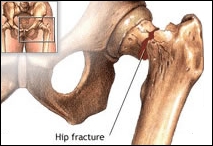 Tutorial: Working with Fractures
Tutorial: Working with Fractures

There are 206 bones in the body, so it is no surprise that broken bones are fairly common injuries. Enough pressure can break any bone, and many of us have experienced that.
A broken bone is called a fracture. There are different kinds of fractures, and several misconceptions about them. One misconception is that if you can move a joint, it is not broken. Although the bone may not be protruding through the skin, the break may still be there. It may be a complete break, shattered, or what is called a hairline fracture. Another misconception is that if there is no swelling, there is no broken bone. Although usually accompanied by swelling, this is not always the case.
Anytime you suspect a joint or bone injury, you should assume that you are dealing with a broken bone, and treat it accordingly. It is better to be cautious when dealing with skeletal injuries.
View the tutorial below on what to do for someone who has a broken bone. It is a good idea to take notes while watching as you will be responsible to know the proper procedure.
Click on the tutorial to begin. Then click on each screen to advance to the next screen. View the presentation as often as you would like, and be sure to set your volume at a reasonable level before you begin.
 Self-Check: Fractures
Self-Check: Fractures
Now, you try. Complete the self-check activity by looking at the prompt below, thinking about it, and then clicking on the question to review the explanation.